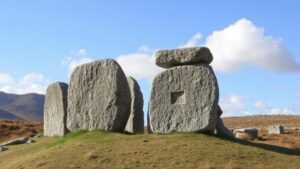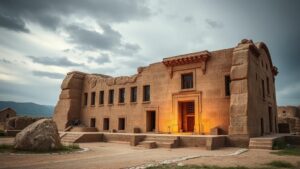Decoding the mysterious Rongorongo script of Easter Island.
Decoding the Mysterious Rongorongo Script of Easter Island
Rongorongo is a unique script native to Easter Island (Rapa Nui), which lies in the southeastern Pacific Ocean. Known for its intriguing symbols, this script remains one of the few undeciphered writing systems in the world. Historically significant, Rongorongo provides insight into the cultural and sociopolitical dynamics of the Rapa Nui civilization. This article will explore the origins, characteristics, theories on its meaning, and its impact on the understanding of Easter Islands history.
The Origins of Rongorongo
Rongorongo first appeared after European contact with Easter Island in the 18th century. It is believed that the script originated in the late 19th century, developed from a combination of local traditions and influences from Western writing systems. The earliest European account of the script was documented by the French explorer Jean-François de Galaup, comte de La Pérouse, who visited the island in 1786.
Rapa Nui society was primarily oral, relying on storytelling and oral traditions. development of a writing system like Rongorongo signifies a shift in communication methods, potentially indicating a need for record-keeping during a period of social transition.
Characteristics of Rongorongo
Rongorongo consists of approximately 120 distinct glyphs, which are arranged in lines that are read boustrophedonically (alternating left-to-right and right-to-left). The symbols represent a variety of concepts, ranging from abstract ideas to concrete images such as flora, fauna, and human figures.
- The glyph shapes are often stylized, taking the form of curved lines and geometric patterns.
- Some symbols appear to have phonetic values, while others may carry logographic meanings.
The script was primarily incised on wooden tablets, with the most famous examples found in museums worldwide. The largest concentration of these artifacts is present in the British Museum and the Musée du quai Branly in Paris.
Theories on Meaning and Decipherment
Despite numerous attempts to decode Rongorongo, no comprehensive understanding of its meanings has been reached. Scholars have proposed several theories related to its content:
- Some researchers suggest that Rongorongo is a form of religious or ceremonial text, possibly related to the cult of the Moai.
- Others argue that it contains genealogical records, historical accounts, or navigational information.
Among the most notable scholars is Dr. Andrew Robinson, who has suggested that a combination of linguistic analysis and contextual understanding of Rapa Nui culture is necessary for successful decipherment. Other attempts have involved comparing the glyphs to known Polynesian languages, but this has yielded inconclusive results.
The Impact on Understanding Easter Island’s History
The existence of Rongorongo provides valuable insights into the history of Easter Islands civilization. For example, the script may illustrate the sociopolitical changes and cultural exchanges that occurred during the 18th and 19th centuries. The scripts introduction coincided with significant ecological changes on the island, including deforestation and potential societal collapse due to resource depletion.
Archaeological discoveries have shown the connection between the Moai statues and the Rapa Nuis religious beliefs, and Rongorongo might play a role in documenting these practices. Understanding this script could uncover forgotten narratives about the island’s past, offering lessons on sustainability and cultural resilience.
Challenges in Deciphering Rongorongo
Efforts to decipher Rongorongo face numerous challenges, including:
- Limited sample size: The available inscriptions are scarce, as many tablets were lost or destroyed over time.
- Language barriers: Without a complete understanding of the Rapa Nui language during the scripts usage, interpretations remain speculative.
- Lack of context: Many of the tablets are isolated from their original cultural context, making it difficult to ascertain their meanings.
Conclusion and Future Directions
Decoding Rongorongo remains an enticing puzzle, tantalizing historians, linguists, and cultural enthusiasts alike. While no definitive interpretation exists, ongoing interdisciplinary studies combining archaeology, anthropology, and linguistics may one day unravel the mysteries of this remarkable script.
For individuals interested in contributing to this field, engaging with academic literature, visiting museums that house Rongorongo tablets, and participating in discussions related to Polynesian history are actionable steps. The story of Rongorongo is still being written, and every new discovery adds a chapter to the rich tapestry of Rapa Nuis past.


